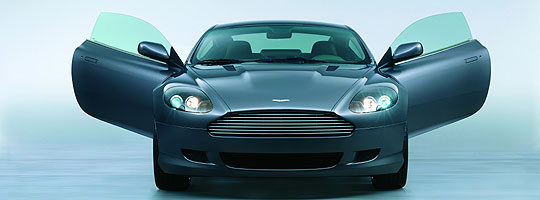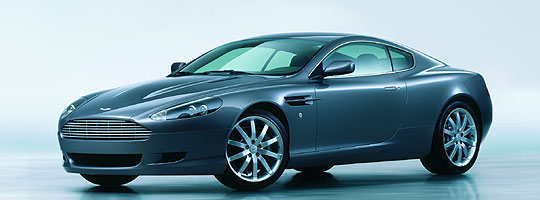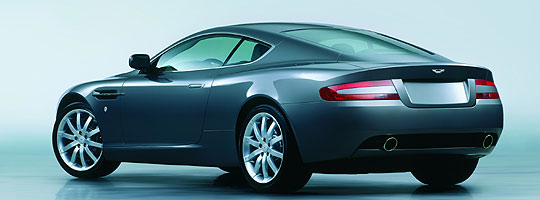
The Aston Martin DB9, the first car to be produced at the company’s modern and recently completed facility in Gaydon, Warwickshire, is making its world debut at this year’s Frankfurt Motor Show on Tuesday, 9th September.
The innovative DB9 heralds an exciting new era for Aston Martin as it reflects the direction that the company is now taking with all future models.
Using a radical new aluminium bonded frame, the 2+2 DB9 is one of the most sophisticated and technically advanced sports cars in the world. It successfully balances the attributes of a sports car with features normally found on luxury cars.
It is also the first production model to use VH Platform strategy (Vertical/Horizontal), which is unique to Aston Martin and will form the basis for all future Aston Martin models. Its advantages are that it is very light, provides better performance, handling and durability and yet it is extremely rigid.

“The DB9 will without doubt be the most important Aston Martin model ever,” said Dr Ulrich Bez, CEO of Aston Martin. “Not only is it the first time in our history that we have a purpose-built facility but we now also have a dedicated platform.
“The DB9 is an excellent example of what we as a company stand for today – namely making elegant and understated British sports cars for individuals.”
The all new DB9 will be crafted at Aston Martin’s new Gaydon facility which is one of the most advanced of its kind in the world. Using the very latest in automotive technology and materials to create the DB9, Aston Martin will spend more than 200 hours hand-building each car.
Power for the DB9 comes from a 450bhp V12 engine which has been developed specifically for this model. The DB9 will also be offered with an extensive list of materials and colour combinations for the interior and exterior paint finishes allowing customers to continue the Aston Martin tradition of personalising their car.
The DB9 will replace the current DB7 which finishes production at the end of 2003. This has become Aston Martin’s most successful model ever. Launched in 1993, the DB7 is intrinsically linked to Aston Martin’s achievements over the past decade with more than 7000 examples produced.
The Aston Martin DB9 will be introduced into the markets around the world in the Spring of 2004. Final pricing and specification will be announced then.

Specifications
Engine: All alloy quad overhead cam 48 valve 5935cc V12. Compression ratio 10.3:1. Visteon engine management controlling fuel injection, ignition, diagnostics and misfire detection system. Stainless steel by-pass valve exhaust system.
Transmission: Shift by wire six speed auto transaxle. Six speed manual transaxle. Limited slip differential. Final Drive Ratio
Interior/Electronics: Full Bridge of Weir leather interior. Six direction electrically controlled front seats (including height adjustment) with optional seat heaters. Air conditioning, rear screen and mirror heating, front screen heating (optional) electronic traction control. Linn stereo entertainment system with 6 CD autochanger available in three options. Alarm and immobiliser system with remote central locking and boot release. Full colour satellite navigation system (optional). Cruise control (optional). Tyre pressure sensing system (optional). Organic Electro Luminescence’s (OEL) instrument pack and air con display. Message centre and trip computer display. Park distance sensors (Optional). Battery disconnect switch. High Intensity discharge (HID) front lighting. Full LED rear lighting.
Kerb Weight: 1710 kgs (Manual) 1760 kgs (Automatic)
Acceleration:
0–60 mph (Manual) 4.7 secs
0–60 mph (Automatic) 4.9 secs
0–100 km/h (Manual) 4.9 secs
0–100 km/h (Automatic) 5.1 secs
0–100 mph (Manual) 10.8 secs
0–100 mph (Automatic) 10.9 secs
Maximum speed: 300km/h (186 mph)
Text & Photos: Aston Martin



